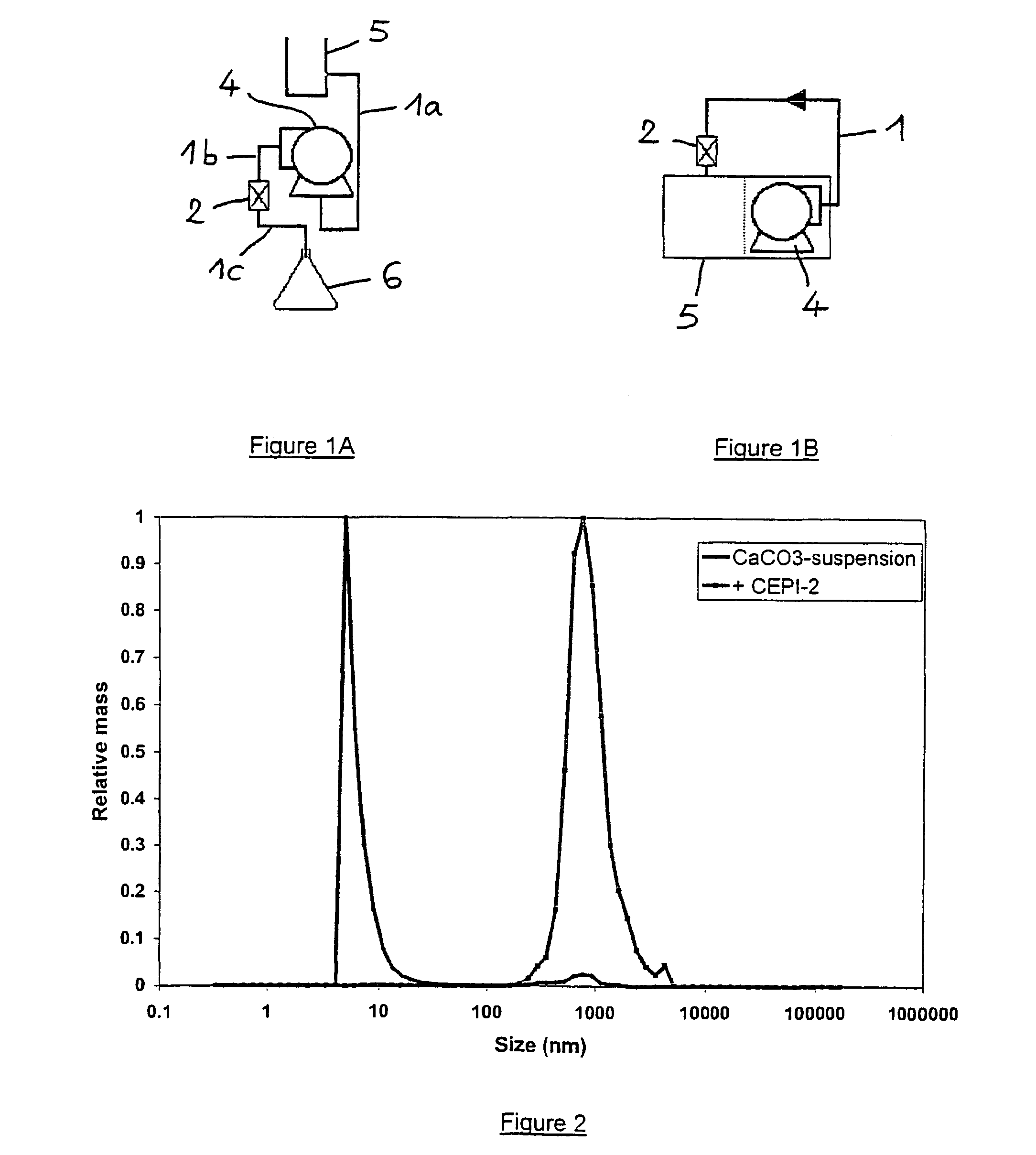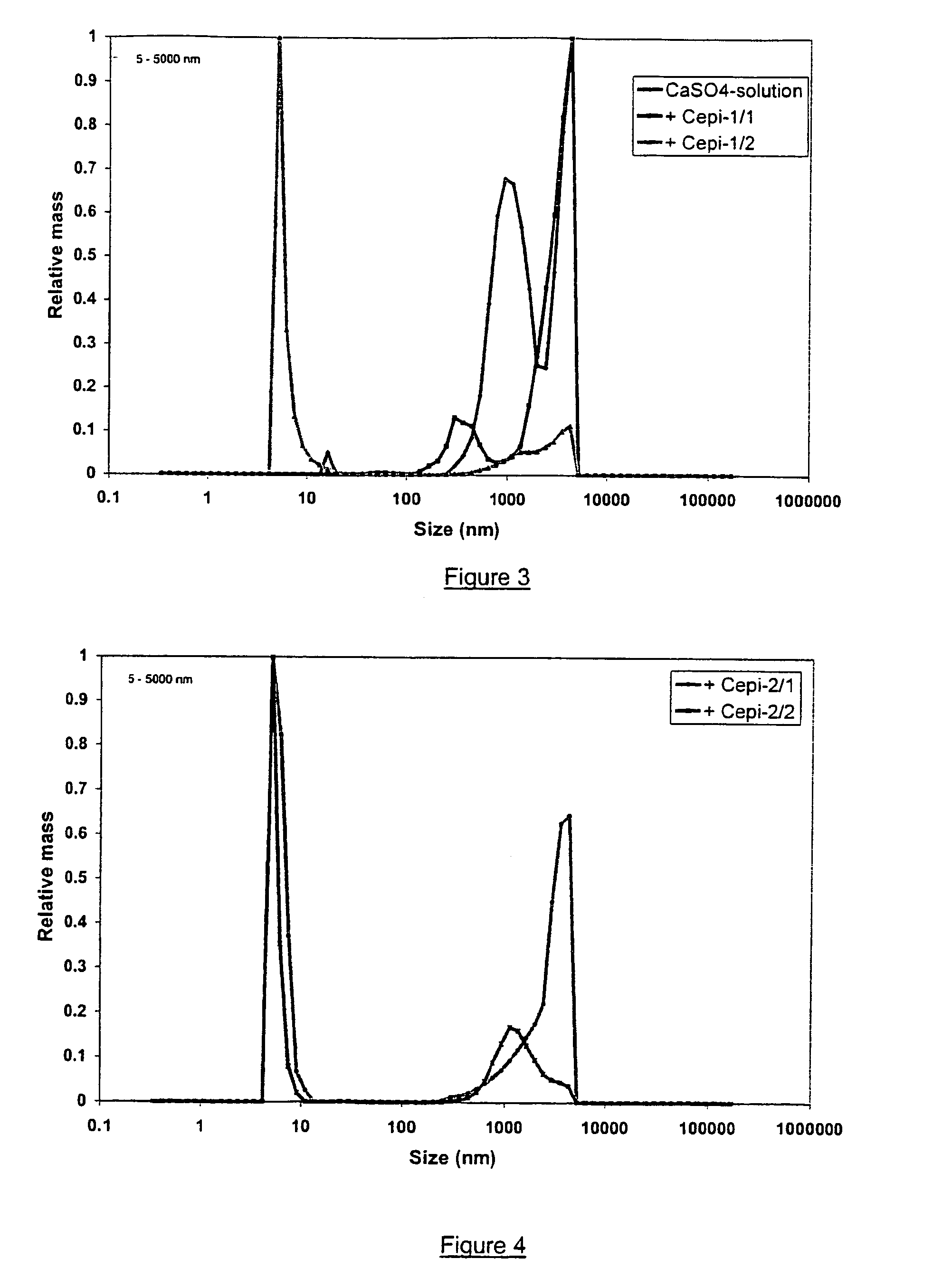Method for reducing the size of metallic compound particles
a technology of metallic compound particles and which is applied in the direction of separation processes, filtration separation, grain treatment, etc., can solve the problems of reducing the reducing the size of metallic compound particles, and requiring significant energy inputs. , to achieve the effect of reducing the siz
- Summary
- Abstract
- Description
- Claims
- Application Information
AI Technical Summary
Benefits of technology
Problems solved by technology
Method used
Image
Examples
example 1
Magnetic Treatment of a Concentrated Calcite Suspension
[0084]Magnetic treatment of a concentrated calcite suspension was effected in the reservoir system shown in FIG. 1A, comprising a tubing (1a,1b,1c) commercially available from Cole-Parmer Instrument Company (Vernon Hills, Ill., U.S.A) under the trade name Masterflex Tygon I / P 70; an internal magnet (2) of the Al—Ni—Co type, commercially available from CEPI-CO (Antwerp, Belgium) under the trade name “W, SAN R1 / 4D” and providing a strength of about 10,000 gauss; a pump (4) commercially available from Cole-Parmer Instrument Company under the trade name Masterflex I / P; a reservoir (5) for receiving the suspension to be treated; and a vessel (6) for receiving the magnetically treated suspension. The tubing (1b,1c) was attached to the pump (4) in such a way that the magnet (2) was in a downstream direction.
[0085]21 g of CaCO3 (precipitated calcite, available from Merck, with an average particle size above 5 μm) was suspended in 6 L de...
example 2
Magnetic Treatment of a Calcium Sulphate Suspension
[0086]Magnetic treatment of a calcium sulphate suspension was effected as follows in the reservoir system shown in FIG. 1A. 14.47 g CaSO4,2H2O (available from Merck) was dispersed by mixing in 7 L de-ionised water in a reservoir (thus resulting in a concentration of 2 g / L at 21° C., yielding a pH value of 7.57. 1.5 L of the suspension was flowed once through the same magnet as in example 1 at a linear flow rate of 5.9 m / s and with a residence time of the suspension through the magnetic field of 250 μs before taking two 200 mL samples (referred to as Cepi-1 / 1 and Cepi-1 / 2 in FIG. 3) having pH values of 7.70 and 7.69, respectively. One hour later, the sampling procedure was repeated (samples referred to as Cepi-2 / 1 and Cepi-2 / 2 in FIG. 4) having pH values of 7.75 and 7.76, respectively. After performing DLS analysis as in example 1, the distribution of relative masses of particles in the range from 5 nm to 5 μm of these samples were r...
example 3
Turbidity Measurements after Magnetic Treatment of a Calcite Slurry
[0087]Magnetic treatment of a concentrated calcite suspension was effected in the closed system shown in FIG. 1B, comprising a ¾ inch tubing (1); an external magnet (2) of the Nd / Fe / B type, available from CEPI-CO (Antwerp, Belgium) and providing a strength of about 10,000 gauss; a pump (4) commercially available from Cole-Parmer Instrument Company under the trade name Masterflex I / P and disposed inside a reservoir (5) with a capacity of 3 L for receiving the suspension. The tubing (1) was attached to the pump (4) in such a way that the magnet (2) was in a downstream direction.
[0088]9 g of calcite (available from Merck, average particle size about 10 μm) was introduced into running distilled water, thus resulting in a concentration of 3 g / L. A reference sample (referenced as blank in FIG. 5) was collected immediately. The calcite suspension was then circulated (1,380 times) through the magnet (2) for 23 hours at a lin...
PUM
| Property | Measurement | Unit |
|---|---|---|
| magnetic field | aaaaa | aaaaa |
| magnetic field | aaaaa | aaaaa |
| size | aaaaa | aaaaa |
Abstract
Description
Claims
Application Information
 Login to View More
Login to View More - R&D
- Intellectual Property
- Life Sciences
- Materials
- Tech Scout
- Unparalleled Data Quality
- Higher Quality Content
- 60% Fewer Hallucinations
Browse by: Latest US Patents, China's latest patents, Technical Efficacy Thesaurus, Application Domain, Technology Topic, Popular Technical Reports.
© 2025 PatSnap. All rights reserved.Legal|Privacy policy|Modern Slavery Act Transparency Statement|Sitemap|About US| Contact US: help@patsnap.com



